WWI St. Mihiel Operations Vigneulles Heavily Detailed Trench & Artillery Map
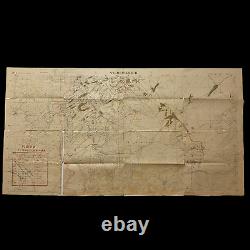
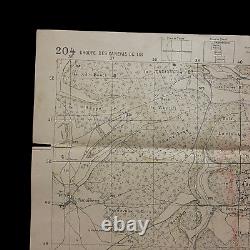
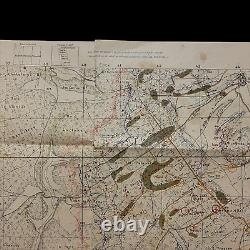
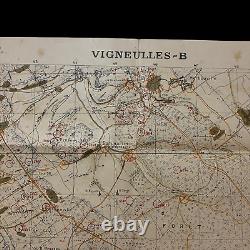
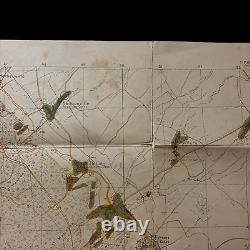
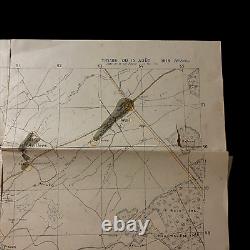
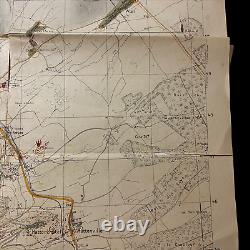
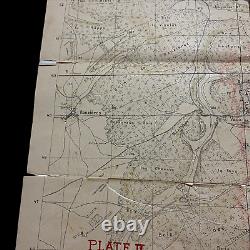
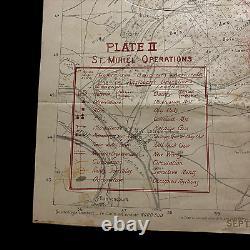
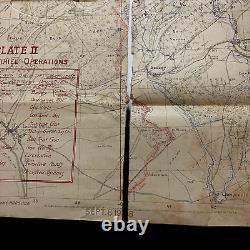
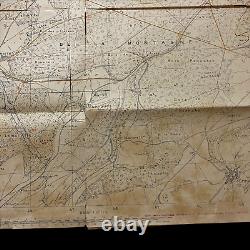
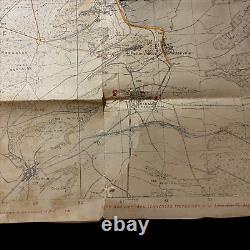

Please note this map is extremity fragile and has some torn sections. Size: 22 x 41 inches. This incredible World War I era operations trench map is titled'Vigneulles-B' of the St.
This is a detailed map showing an extremely large legend denoting battery locations, observation posts, dugouts, command posts, machine guns, machine gun dugouts, anti-tank guns, sensitive points, and occupy positions. These maps were created through reconnaissance and intelligence operations of Allied aircraft. Through aircraft and ground reporting French, B. Forces would create maps suited for their needs.These maps would arrange anywhere from topographical terrain maps, detailed trench maps, artillery and observation positions, etc. What makes this map so interesting is that it includes both English and French translations. This map is marked as showing updated trench guides and correct legend locations as of August 15th, 1918 as an updated 4th edition.
The Battle of Saint-Mihiel was a major World War I battle fought in September of 1918, involving the American Expeditionary Forces (AEF) and 110,000 French troops under the command of General John J. Pershing of the United States against German positions. Army Air Service played a significant role in this action. This battle marked the first use of the terms "D-Day" and "H-Hour" by the Americans.
The Saint-Mihiel offensive began on September 12th with a threefold assault on the salient. The main attack was made against the south face by two American corps. On the right was the I Corps (from right to left the 82nd, 90th, 5th, and 2nd Divisions in line with the 78th in reserve) covering a front from Pont-à-Mousson on the Moselle west toward Limey; on the left, the IV Corps (from right to left the 89th, 42d, and 1st Divisions in line with the 3rd in reserve) extending along a front from Limey west toward Marvoisin.A secondary thrust was carried out against the west face along the heights of the Meuse, from Mouilly north to Haudimont, by the V Corps (from right to left the 26th Division, the French 15th Colonial Division, and the 8th Brigade, 4th Division in line with the rest of the 4th in reserve). A holding attack against the apex, to keep the enemy in the salient, was made by the French II Colonial Corps (from right to left the French 39th Colonial Division, the French 26th Division, and the French 2nd Cavalry Division in line). In First Army reserve were the American 35th, 80th, and 91st Divisions. The American V Corps location was at the northwestern vertices, the II French Colonial Corps at the southern apex, and the American IV and I Corps at the southeastern vertices of the salient. Furthermore, General Pershing's intent was obvious; to envelop the salient by using the main enveloping thrusts of the attack against the weak vertices.
The remaining forces would then advance on a broad front toward Metz. This pincer action, by the IV and V Corps, was to drive the attack into the salient and to link the friendly forces at the French village of Vigneulles, while the II French Colonial Corps kept the remaining Germans tied down. The French II Colonial Corps were successful in the attack on the apex and entered Saint-Mihiel on 15 September 1918, taking 4000 prisoners.
They then pushed into the plain of Woëvre up to Haumont-Woël-Doncourt. The Allies mobilized 1,481 aircraft to provide air superiority and close air support over the front. About 40% were American-flown in American units, the remainder were British, French, and Italian. Nine bomber squadrons of the British RAF, although provided for the battle, were not under Pershing's operational control. Defending the salient was German "Army Detachment C", consisting of eight divisions and a brigade in the line and about two divisions in reserve.
Now desperately short of manpower, they had begun a step-by-step withdrawal from the salient only the day before the offensive began. Pershing's plan had tanks supporting the advancing infantry, with two tank companies interspersed into a depth of at least three lines, and a third tank company in reserve. The result of the detailed planning was an almost unopposed assault into the salient. [15][failed verification] The American I Corps reached its first day's objective before noon, and the second day's objective by late afternoon of the second.
The attack went so well on 12 September that Pershing ordered a speedup in the offensive. By the morning of 13 September, the 1st Division, advancing from the east, joined up with the 26th Division, moving in from the west, and before evening all objectives in the salient had been captured. At this point, Pershing halted further advances so that American units could be withdrawn for the coming Meuse-Argonne Offensive. This item is in the category "Collectibles\Militaria\WW I (1914-18)\Original Period Items\United States\Personal, Field Gear".The seller is "premierrelics" and is located in this country: US. This item can be shipped worldwide.
- Theme: Militaria
- Original/Reproduction: Original
- Conflict: WW I (1914-18)

